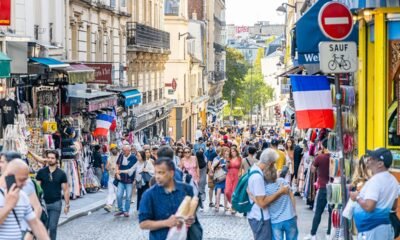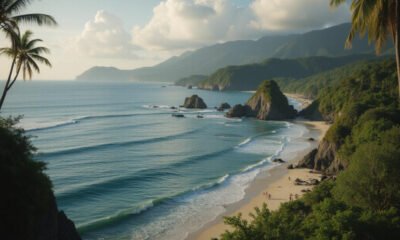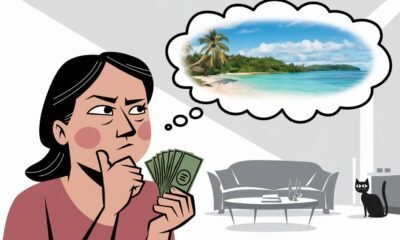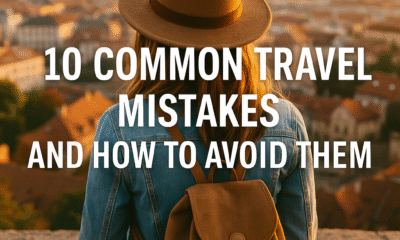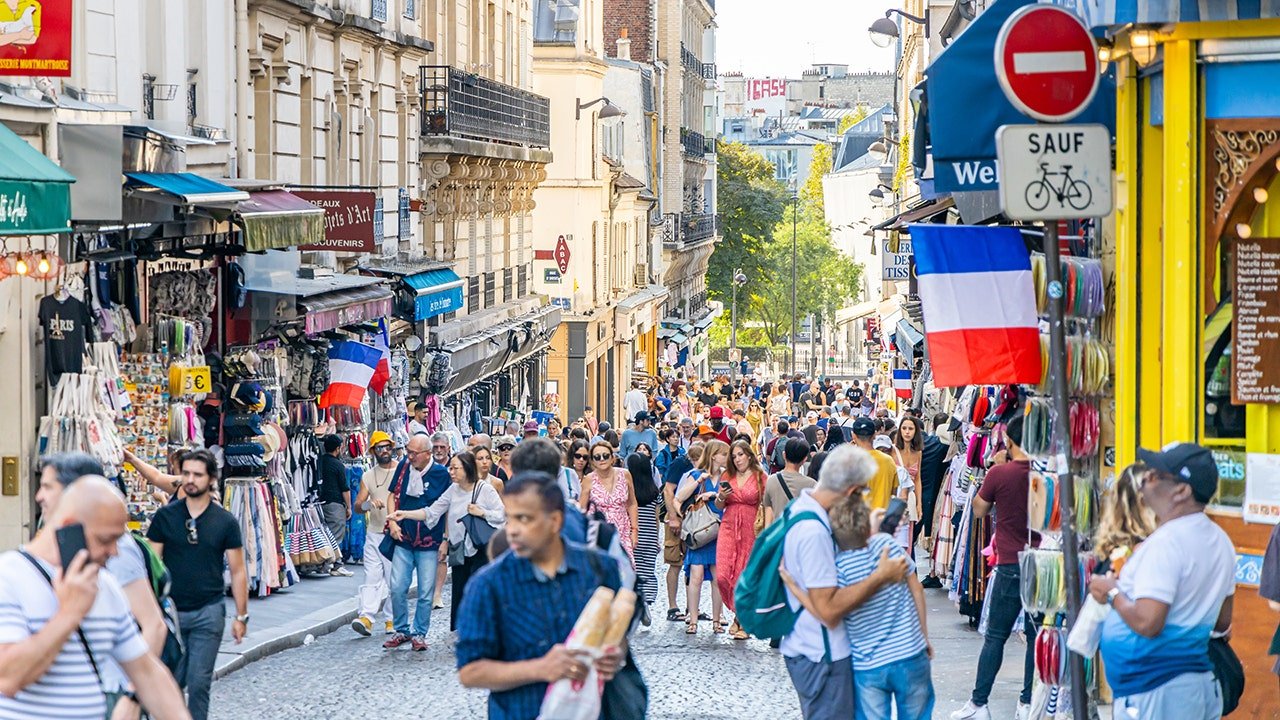Planning a trip to Panama City and wondering if it’s safe? The short answer is yes, but with some caveats. Like any major urban destination, it has its safer neighborhoods and its rougher edges. The good news is, most travelers enjoy their time in Panama City without any issues, especially when they stick to popular areas and follow a few smart precautions. Exploring a new city can be exciting and rewarding, but it’s important to balance adventure with safety considerations.
Introduction to Panama City
Panama City, the major city and capital of Panama, is a vibrant hub of commerce, culture, and entertainment in Central America. Located along the Pan American Highway, it serves as a key transit point for travelers and goods alike. While Panama City is generally safe, it’s crucial to monitor local media and stay informed about any advisories from local authorities. This proactive approach helps ensure a smooth and enjoyable trip. Like any big city, Panama City has areas with higher crime rates, particularly in the southern parts of the city. Violent crime and petty theft can occur, but with proper precautions and awareness, visitors can significantly minimize their risk of encountering problems.
Understanding the Safety Landscape
Panama City is one of the more secure capitals in Central America. Its economy is relatively strong, the infrastructure is modern, and tourism is well-developed. Still, that doesn’t mean you can let your guard down entirely. Knowing where to go, what to avoid, and how to prepare makes all the difference.
While Panama City is generally safe, it’s important to stay informed about safety in other parts of the country as well. Exploring the concept of “Panama safe,” you should be aware that some areas may require more caution.
It is a major city along the Pan American Highway, making it a strategic transit point, not just for travelers but, unfortunately, also for drug traffickers. This reality reinforces the need for a strong police presence, particularly at ports, border crossings, and along the southern route to the Colombian border.
Where You Go Matters
Safety in Panama City often comes down to location and behavior. If you’re wandering through well-traveled parts of the city like Casco Viejo or Punta Pacifica, you’re likely to feel safe and see plenty of other visitors. But drift too far into lesser-known neighborhoods after dark, and things can change quickly.
Crime Trends and Illegal Drugs
Panama City generally experiences low levels of violent crime compared to other countries in Central America, particularly in areas frequented by tourists. That being said, it is always good to check the news or government websites before hitting any big cities. The main concern is petty theft, pickpocketing, bag snatching, and phone grabs. These are opportunistic crimes that tend to happen in crowded areas, markets, shopping centres, or on public transportation. Staying alert and keeping your belongings close goes a long way. Wealso recommend checking out your countries Travel Warnings for Panama.
There have been numerous reports of theft around bus stations, especially near Avenida Central. Areas near the Colombian border are also monitored more heavily due to cross-border smuggling and drug offences. Anyone caught with even a small quantity of illegal drugs could face penalties of up to two years in prison.
Neighborhoods to Approach with Caution
Some areas do have a reputation for being less safe. Neighborhoods like El Chorrillo, San Miguelito, and Pedregal have higher crime rates and are best avoided, especially at night. While there’s often a visible presence of police officers in these zones, it’s not always enough to deter more serious crimes like armed robberies.
Civil unrest in the form of political protests can occasionally flare up in the city, often without warning. While typically peaceful, these events can disrupt traffic and public safety, and tourists are advised to steer clear of demonstrations to avoid legal complications under Panama’s strict local laws.
Where to Stay Safely in Panama City
When it comes to choosing a place to stay, several neighborhoods offer both safety and character. Casco Viejo is a favorite among tourists. The historic center has undergone significant revitalization, transforming into a vibrant cultural hub with colonial architecture, boutique hotels, rooftop bars, and galleries. The area is also well-patrolled by police, especially at night.
Punta Pacifica is another safe option, known for its modern high-rises, upscale shopping, and medical centers. It offers a more polished, international vibe. Obarrio, the city’s business district, blends work and play with offices, nightlife, and restaurants, all set in a zone that’s generally well-monitored. El Cangrejo is more relaxed, home to expats, students, and locals. It’s walkable, filled with cafes and street art, and offers budget-friendly lodging.
Tourist resorts in these areas usually provide 24-hour security and are located in more populated areas, offering peace of mind without sacrificing convenience or access to attractions.
Assessing Mixed-Reputation Areas
Not every neighborhood in Panama City has the same reputation. Calidonia, for example, is a central area that can feel a bit rougher around the edges, especially at night. It’s close to attractions but also sees more transient foot traffic. If you do visit areas like this during the day, stay aware and keep your valuables hidden. At night, it’s best to stick to better-lit, more populated areas.
Navigating the City Safely
Getting around the city is straightforward, especially if you use rideshare apps like Uber. Uber is widely available, affordable, and considered much safer than hailing a cab on the street. It also removes the language barrier by letting you enter your destination in the app. Traditional taxis are plentiful but can be inconsistent with pricing and safety. Be cautious with taxi drivers who pick up multiple passengers or resist using the meter.
If you’re arriving at the airport, book your ride inside the terminal before heading out. This reduces your chances of being overcharged or scammed. While public buses and the Metro are cheap and efficient, they can be crowded, which raises the risk of pickpocketing.
Tips for Avoiding Theft
When it comes to crime, tourists are rarely targets of anything violent, but theft can and does happen. The key is not to make yourself an easy target. Avoid using your phone while walking, especially in less busy areas. Don’t hang your bag over the back of a chair at a restaurant. Use anti-theft bags that zip securely and carry minimal cash. Always lock your bags in your hotel or hostel when you’re out.
Staying Smart at ATMs
ATMs are another area where caution is important. Always try to use ATMs that are located inside banks, shopping centers, or hotels. These are monitored and much safer than machines on the street. Use ATMs during the day, and avoid withdrawing large amounts of money at once. Cover the keypad with your hand when entering your PIN and be aware of your surroundings. When you withdraw money, tuck it away discreetly and avoid lingering outside the ATM.
Nightlife and After-Dark Advice
Nighttime safety is a major consideration. Panama City has an active nightlife, especially in areas like Casco Viejo and Obarrio. These zones are relatively safe when bustling with activity, but things can feel different when the crowds thin out. Use Uber to get home instead of walking. Stay on main roads and well-lit paths. Avoid isolated viewpoints like the Madden Dam overlook or empty beach areas.
This advice extends to more remote destinations, too. If you’re heading out to places like Bocas del Toro for a beach break, be cautious at night, especially in areas without much lighting or foot traffic. Petty crime in tourist beach towns tends to spike when people are more relaxed and distracted.
Adventure Tourism and Safety
Panama is a paradise for adventure tourism, offering lush rainforests, stunning beaches, and a vibrant cultural scene. However, engaging in adventure sports and activities comes with inherent risks. To ensure safety, it’s essential to research and choose reputable tour operators that adhere to safety guidelines and regulations. Additionally, being aware of local laws, especially those related to drug offenses, is crucial. Respecting the environment and local customs is also important, as Panama has implemented measures to promote sustainable tourism, including the establishment of privately owned nature reserves and conservation areas. Travel insurance that covers medical emergencies, evacuations, and adventure activities is highly recommended to provide peace of mind during your adventures.
Health and Medical Readiness
Healthcare in Panama City is quite good, especially at private facilities. Pacifica Salud Hospital Punta Pacífica is one of the top hospitals in the city, offering modern care and English-speaking staff. Public hospitals exist and are cheaper, but the wait times and services may not be what you’re used to. Bring any necessary prescriptions with you, and consider purchasing travel insurance that includes coverage for medical emergencies, evacuation, and theft.
Rescue services are available, but you should ensure your travel insurance plan includes coverage for air evacuation, particularly if you plan to engage in outdoor activities like hiking or adventure tourism in privately owned nature reserves. These reserves often offer stunning landscapes, but they can be remote and difficult to access in an emergency.
Weather Risks and Seasonal Awareness
Unlike much of the Caribbean, Panama is rarely hit by hurricanes or much extreme weather. However, the country does experience a distinct rainy season from May through November. During this time, heavy rains can lead to flash flooding and landslides, particularly in rural or hilly areas like Boquete. Plan outdoor adventures early in the day and check local forecasts before you set out. Always have a backup plan in case your plans get washed out.
Respecting Local Laws
Understanding and respecting local laws can also keep you out of trouble. Panama has very strict drug laws. Possession of even a small amount of marijuana or other substances can result in jail time. Smoking and vaping are prohibited in public areas and carry fines. You should also avoid political demonstrations and large gatherings. Foreigners have occasionally been detained simply for being in the wrong place at the wrong time.
Tourists are also expected to carry valid identification, including your passport and entry stamp, while out and about. Police officers have the right to request ID, and failure to produce it can lead to complications.
Local Customs and Traditions
Panama is a culturally rich and diverse country, influenced by indigenous, Spanish, and African heritage. When visiting, it’s important to respect local customs and traditions, especially when interacting with indigenous communities in places like the San Blas Islands or Bocas del Toro. Understanding and adhering to local laws, such as those related to same-sex relationships, is also essential. While Panama is generally welcoming and inclusive, visitors should remain mindful of their surroundings and take necessary precautions to stay safe, particularly in populated areas like Avenida Central. Embracing and respecting the local way of life will enhance your travel experience and ensure a positive interaction with the local community.
Why Tours Are a Smart Choice
One smart way to explore more of Panama safely is by booking organized tours. These tours not only provide transportation and a guide, but they also take you to vetted destinations that have been checked for safety and reliability. Tours like the Monkey Island and Panama Canal Eco Tour are popular for a reason—they offer incredible experiences without the guesswork. We have done walking in tours everywhere, from Mexico City to Lisbon and find it the best way to start off your exploration of any city. Cultural tours to communities like the Embera people are best done through reputable operators to ensure both safety and respectful engagement.
If something goes wrong, it’s important to know who to call. The general emergency number in Panama is 911. For police specifically, dial 104. For fire emergencies, dial 103. Having these numbers stored in your phone or written down can save time in a crisis.
Safety in Panama City
While it’s unlikely you’ll face serious problems in Panama City, being prepared is always a good idea. Travel insurance is highly recommended. It not only covers medical emergencies but also lost luggage, cancellations, and other travel hiccups.
In the end, Panama City rewards cautious, informed travelers with rich culture, great food, and unforgettable experiences. The key is to travel smart. Stick to the well-known neighborhoods, keep an eye on your belongings, and don’t take unnecessary risks. With the right mindset and preparation, your trip to Panama City in 2025 will be memorable for all the right reasons.
Frequently Asked Questions
Is Panama City generally safe for tourists?
Panama City is generally safe for tourists, although it’s advisable to exercise increased caution in specific areas. Staying aware of your surroundings and following local advice can enhance your safety.
What are some safe neighborhoods to stay in Panama City?
For a safe stay in Panama City, consider neighborhoods like Casco Viejo, Punta Pacifica, Obarrio, and El Cangrejo. These areas are known for their security and vibrant atmosphere.
How can I ensure my safety while using ATMs in Panama City?
To ensure your safety while using ATMs in Panama City, use them during daylight in well-lit, secure locations and remain vigilant by avoiding isolated machines. Staying aware of your surroundings is crucial for your safety.
What should I do in case of a medical emergency in Panama City?
In case of a medical emergency in Panama City, you should dial 911 for immediate assistance or contact Pacifica Salud Hospital Punta Pacífica at 507-204-8184 for medical support.
Are there any legal considerations I should be aware of in Panama City?
You should be aware of local laws in Panama City, particularly regarding strict drug regulations and smoking in public spaces. Understanding these legal considerations is crucial to avoid potential issues.


